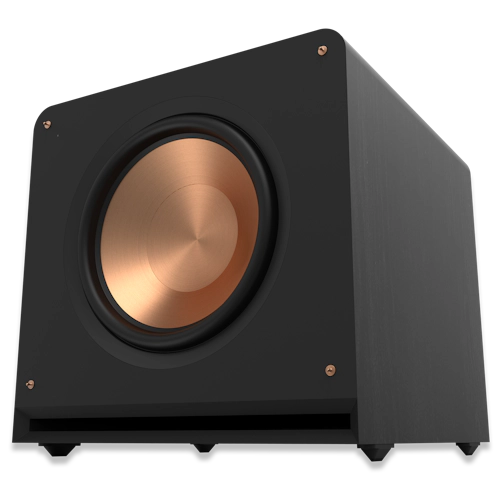
DUAL SUBS FOR DOUBLE THE BASS DROP – TWO KLIPSCH RP SUBWOOFERS ARE BETTER THAN ONE
MONSTER BASS ANYPLACE…TIMES TWO?
We’ve spent years engineering the first-ever Reference Premiere (RP) Subwoofer line to perfection - harnessing the laws of physics, guided by the inverse relationship of higher efficiency and lower distortion. This was, and still is, a foundational design principle of our legendary founder Paul W. Klipsch that resulted in in our all-new, utterly ground-shaking RP Subs that deliver clean, powerful bass while using less effort.
Those new to the subwoofer world can get a crash course here, but for those who already know and love Klipsch subs, this article will explain why you can’t go wrong with a set of twins.
ROOM-FILLING BASS

A subwoofer is an essential part of your system, and those on a budget or just starting out in the hobby often stick to one small sub. As your tastes and square footage grow, so do the demands you’ll have for deep, powerful bass. By having two identical Reference Premiere Subwoofers, you’ll smooth out the peaks and nulls typically experienced by a single subwoofer arrangement. (Peaks = exaggeration of a bass note, null = the absence of bass.)
In short: two subwoofers provides even distribution of those low frequencies and increases output capability. Everyone in the room will feel those deep, vibrant tones.
BETTER HEADROOM = BETTER DYNAMICS
These subs are built to keep up with our range of award-winning passive loudspeakers through their hyper-efficient, balanced performance. Purpose built in every way – from the depth of the enclosure to the size of the surround on the driver and more – our Reference Premiere Subwoofers deliver pound-for-pound better sound than the competition. When you have two identical subs, you get better headroom for each subwoofer. That means you don’t have to drive the sub (or your system) as hard to produce audiophile-level sound because you’ve got two high performance subwoofers to pitch in and do the heavy lifting. This results in better dynamics and a higher overall sound pressure level (SPL).
“The overall output of these subwoofers is ground-shaking,” says Vlad Grodzinskiy, Director of Product Development at Klipsch. “The extra octave in low frequency extension is something that personally, has been unheard of for me before. And having this addition to music, movies, and games is out of this world.”
Why stop with just one sub?
“The overall output of these subwoofers is ground-shaking,” says Vlad Grodzinskiy, Director of Product Development at Klipsch. “The extra octave in low frequency extension is something that personally, has been unheard of for me before. And having this addition to music, movies, and games is out of this world.”
SWIMMIN’ IN SOUND
Having multiple subwoofers can make it harder to "pinpoint" where the subwoofer is…and that’s a good thing. “The whole idea of home theater is that your speakers should essentially disappear when listening to them,” notes Chad Charleston, Associate Product Manager at Klipsch.
He explains that when you’ve only got one subwoofer, you can more easily pinpoint where the low notes are coming from. Your ears find those low frequencies in the room and your brain processes those deep notes as if they’re coming from one location. This might not make sense with the music, movie, or games that you’re trying to enjoy. By adding a second sub, “you’re just swimmin’ in the bass all around you,” Charleston says.




